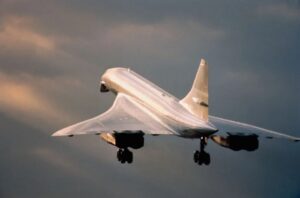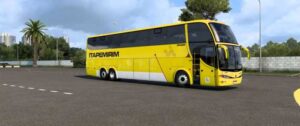Concorde development cost, a staggering figure that reflects the audacity of a dream: to conquer the sound barrier and bring supersonic travel to the masses. The Concorde, a technological marvel of the 20th century, was a testament to human ingenuity, but its development was a costly endeavor, pushing the boundaries of engineering and finance.
The ambitious project, born from a collaboration between Britain and France, aimed to revolutionize air travel, but the high price tag came with a multitude of challenges, ultimately contributing to the aircraft’s eventual retirement.
From the meticulous design of its delta wings to the development of powerful supersonic engines, the Concorde’s creation demanded groundbreaking advancements in materials science and aerodynamics. The sheer scale of the project, combined with the need for specialized technology, drove up the development costs to unprecedented levels.
While the Concorde’s impact on aviation is undeniable, its financial struggles highlight the complex interplay between technological ambition and economic realities.
The Concorde
The Concorde, a supersonic passenger jet that graced the skies from 1969 to 2003, stands as a testament to human ingenuity and the pursuit of technological advancement. This remarkable aircraft pushed the boundaries of aviation, achieving speeds exceeding twice the speed of sound.
Its iconic design, coupled with groundbreaking technological innovations, revolutionized air travel and captured the imagination of the world.
Technological Innovations
The Concorde’s remarkable capabilities were made possible by a combination of innovative technologies that addressed the unique challenges of supersonic flight.
The Concorde’s development cost was astronomical, exceeding the initial estimates by a significant margin. This led to a long and arduous journey to bring the supersonic jet to life. While the plane was a technological marvel, it ultimately faced challenges in finding profitability, leading to its eventual retirement.
If you’re curious about what ultimately happened to this iconic aircraft, check out this article: what happened to concord game. The Concorde’s story serves as a reminder that even the most ambitious engineering projects can be susceptible to economic realities.
- Delta Wing Design:The Concorde’s distinctive delta wing configuration, with its sharp, swept-back shape, was crucial for achieving supersonic speeds. This design minimized wave drag, a form of resistance that increases significantly at supersonic speeds. The delta wing’s shape also provided exceptional stability and maneuverability at high altitudes.
- Supersonic Engines:The Concorde was powered by four Rolls-Royce Olympus 593 turbojet engines, specifically designed for supersonic flight. These engines employed a sophisticated afterburning system, which injected fuel into the exhaust stream, boosting thrust and enabling the aircraft to reach supersonic speeds.
The Olympus engines were also highly efficient, minimizing fuel consumption for sustained supersonic flight.
- Advanced Materials:The Concorde’s construction relied on advanced materials, such as aluminum alloys and titanium, to withstand the extreme temperatures and stresses encountered during supersonic flight. These materials were carefully selected for their strength, lightweight properties, and resistance to heat. The use of titanium, for instance, was essential for the aircraft’s nose cone, which had to withstand the intense heat generated during supersonic flight.
Development Costs
The Concorde’s development cost was a staggering sum, reflecting the ambitious nature of the project and the advanced technology it required. It’s a story of both remarkable engineering and financial extremes, a testament to the challenges of pushing the boundaries of aviation.
Development Cost Breakdown
The Concorde’s development cost was a massive undertaking, spanning decades and involving multiple countries. It’s estimated that the total cost, including research and development, manufacturing, and testing, reached approximately $2.5 billion in 1970s dollars, which translates to about $18 billion in today’s money.
- Research and Development (R&D):This phase, spanning from the 1950s to the early 1960s, focused on exploring supersonic flight, materials science, and aerodynamic design. R&D costs were significant, accounting for a substantial portion of the overall development budget.
- Manufacturing:Building the Concorde required specialized manufacturing techniques and materials. The complex construction process involved both British and French companies, further contributing to the cost.
- Testing:Extensive flight testing was crucial to ensure the Concorde’s safety and performance. This phase involved numerous test flights, including rigorous performance evaluations and certification processes, all of which added to the development cost.
Factors Contributing to High Development Costs
The Concorde’s high development cost was driven by several key factors:
- Ambitious Nature of the Project:The Concorde aimed to break new ground in aviation, pushing the limits of technology and engineering. This ambition inevitably led to increased development costs.
- Specialized Technology:The Concorde required cutting-edge technology, such as advanced materials, powerful engines, and sophisticated avionics. Developing and integrating these technologies was a costly endeavor.
- Involvement of Multiple Countries:The joint development effort between Britain and France added complexity to the project, requiring coordination and collaboration across national borders. This international cooperation, while essential, also added to the cost.
Comparison with Other Aircraft Projects
Comparing the Concorde’s development cost to other major aircraft projects reveals its exceptional nature. While the Boeing 747 and the Airbus A380 were also significant undertakings, their development costs were considerably lower.
- Boeing 747:The iconic “jumbo jet” was a massive project, but its development cost, estimated at around $1 billion in 1970s dollars, was significantly lower than the Concorde’s. This difference can be attributed to the 747’s focus on a more conventional design and the use of existing technology.
- Airbus A380:The world’s largest passenger airliner, the A380, was a complex project with a development cost estimated at around $15 billion in 2000s dollars. While the A380’s cost was higher than the 747, it was still lower than the Concorde’s. This difference can be attributed to factors such as the A380’s use of existing technologies and the larger production volume.
Financial Challenges and Business Model
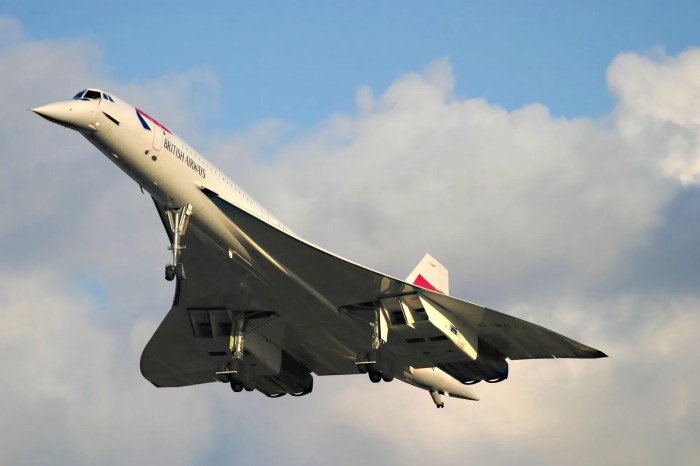
The Concorde’s development and operation were marked by significant financial challenges. Despite its technological marvel, the aircraft faced high operating costs, limited passenger capacity, and a heavy reliance on government subsidies. This section delves into the economic hurdles the Concorde encountered and examines the business model employed by the airlines that operated it.
Operating Costs and Profitability
The Concorde’s operating costs were considerably higher than those of conventional subsonic airliners. This was primarily due to its high fuel consumption, specialized maintenance requirements, and the need for a skilled crew.
The Concorde consumed approximately twice as much fuel as a Boeing 747 for the same distance, leading to significant fuel expenses.
Moreover, the aircraft’s complex design required specialized maintenance and skilled technicians, further increasing operating costs. The limited passenger capacity, with a maximum of 100 passengers, further impacted profitability.
Business Model and Government Support
British Airways and Air France, the only airlines to operate the Concorde, adopted a business model that relied heavily on government support. The airlines initially subsidized the aircraft’s development and later received government grants to offset operating costs.
The British and French governments provided significant financial support, recognizing the Concorde’s technological prestige and its contribution to national pride.
This government support played a crucial role in enabling the Concorde’s operation, as its high operating costs and limited profitability would have made it commercially unsustainable without subsidies.
Factors Contributing to Retirement, Concorde development cost
The Concorde’s retirement in 2003 was driven by a confluence of factors.
- The rising fuel prices in the late 1990s significantly impacted the aircraft’s profitability, as its fuel consumption was already a major cost driver.
- The Concorde’s limited passenger capacity and high operating costs made it difficult to compete with conventional airliners, especially in the face of increased competition from low-cost carriers.
- The Concorde’s safety record was also a concern, as the aircraft was involved in several incidents, including the tragic crash in 2000. This raised public safety concerns and negatively impacted the airline’s reputation.
- The economic downturn following the 9/11 attacks further exacerbated the Concorde’s financial challenges, leading to a decline in demand for transatlantic flights.
Legacy and Impact on Aviation
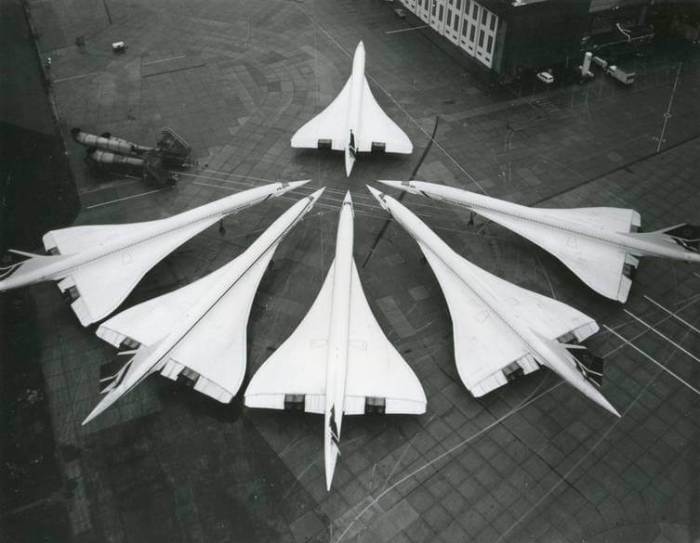
The Concorde’s legacy extends far beyond its commercial lifespan, leaving a profound mark on the aviation industry, influencing design, materials, and the very concept of supersonic travel. Its cultural impact solidified its place in popular culture, making it an enduring symbol of technological advancement.
Influence on Aircraft Design and Materials
The Concorde’s revolutionary design and innovative materials pushed the boundaries of aviation engineering.
- Delta Wing Design:Its distinctive delta wing configuration, inspired by the experimental French Dassault Mirage III, provided superior maneuverability at supersonic speeds, enabling it to achieve remarkable performance.
- Lightweight Materials:The Concorde’s construction employed advanced materials, such as aluminum alloys and titanium, to reduce weight and withstand the extreme stresses of supersonic flight. This paved the way for the use of lightweight materials in future aircraft.
- Aerodynamic Innovations:The Concorde’s slender fuselage, variable-sweep wings, and sophisticated control systems were all designed to optimize its performance at supersonic speeds. These innovations provided valuable insights for subsequent supersonic aircraft designs.
Cultural Significance and Legacy
The Concorde’s sleek design and iconic status captured the public imagination, becoming a symbol of luxury, speed, and technological prowess.
- Popular Culture:The Concorde appeared in numerous films, television shows, and books, further cementing its place in popular culture. Its image became synonymous with high-speed travel and a glamorous lifestyle.
- Enduring Legacy:The Concorde’s legacy as a technological marvel continues to inspire generations of engineers and designers. Its impact on supersonic flight research and its enduring presence in popular culture ensures its place in aviation history.
Potential for Future Supersonic Passenger Aircraft
The Concorde’s success and its eventual demise offer valuable lessons for the future of supersonic passenger travel.
- Technological Advancements:Recent advancements in materials science, aerodynamics, and engine design have opened new possibilities for quieter and more fuel-efficient supersonic aircraft. For example, the use of composite materials and advanced engine designs could significantly reduce sonic booms and fuel consumption.
- Economic Viability:The Concorde’s high operating costs and limited passenger capacity were significant factors in its demise. Future supersonic aircraft must be designed to be economically viable, considering factors such as fuel efficiency, maintenance costs, and passenger demand.
- Environmental Considerations:The Concorde’s environmental impact, particularly its sonic booms and fuel consumption, raised concerns. Future supersonic aircraft must address these concerns by minimizing their environmental footprint and ensuring compliance with stricter regulations.
Last Point: Concorde Development Cost
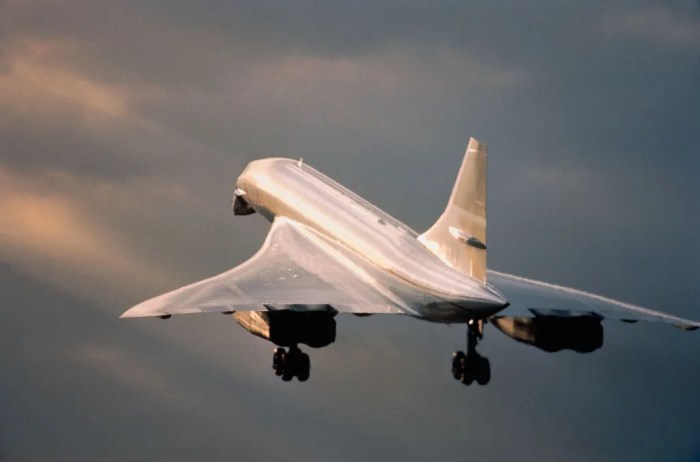
The Concorde, a symbol of human ambition and technological prowess, left an indelible mark on aviation history. Its legacy, however, is intertwined with the challenges of supersonic flight, reminding us that innovation often comes at a price. While the Concorde’s high development costs and operational challenges ultimately led to its retirement, it paved the way for future advancements in supersonic flight, leaving a lasting impact on the industry and inspiring generations to push the boundaries of what’s possible.
The story of the Concorde is a reminder that even the most ambitious dreams can be tempered by economic realities, and that the quest for technological advancement often involves navigating a complex interplay of factors.






